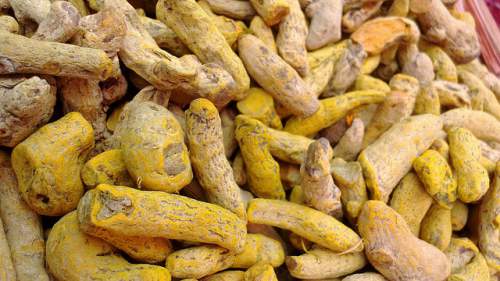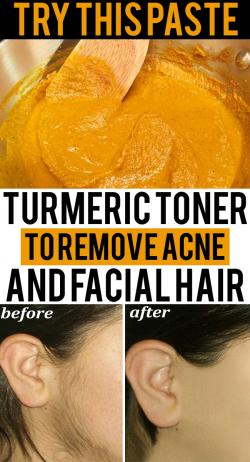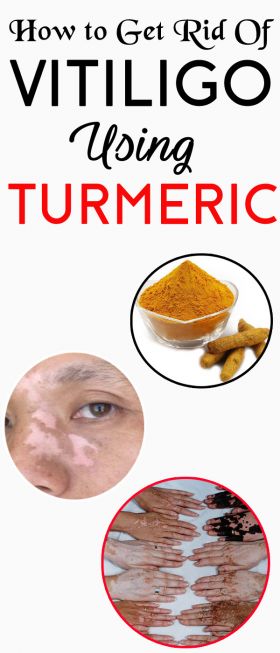
Redness in center of the face, acne like breakouts and bumpy texture are common signs of rosacea. Turmeric for rosacea helps to reduce these symptoms.
Extensively used in Indian foods, turmeric is prominent for its medicinal properties. Internal and topical application of this spice can improve your overall health.
U.S official reports state that about 14 million people are affected with this skin disorder. However, main cause of rosacea is unknown.
Various factors like genetics, abnormality in blood vessels, mites, skin peptides and overreacting of immune system are held responsible for this skin condition. (1)
Is Turmeric Good for Rosacea?
Various researchers and studies back ability of turmeric to treat skin conditions like rosacea. (2)
- Inflammation and stinging sensation caused by rosacea can be reduced by anti-inflammatory property of turmeric powder.
- Curcumin is an active compound residing in turmeric powder, which helps to curb burning sensation, thwart free radicals and protects your skin from harmful UV rays. (3)
- Nutrients in turmeric powder helps to reduce skin discoloration and obtain radiant skin.
- Regular application of this home available spice can improve blood circulation and thus reduce rosacea symptoms.
- Its anti-bacterial property help to curb acne like break-outs.
- Assorted nutrients in this spice help to rejuvenate skin and postpone aging signs.
- Antioxidant ability of this powder enhances collagen production and fades wrinkles.
- Anti-inflammatory property exhibited by curcumin reduces swelling of bumps.
- Its antiseptic ability prevents infectious germs over the skin.
How to Use Turmeric for Rosacea?
To reap all these benefits listed above, all you’ve to do is to try it topically.
Though internal consumption is beneficial, for treating rosacea or any other skin related issues beauty experts recommend topical application.
Below given are different recipes.
#1 Turmeric and Milk
Cleansing ability of milk helps to remove impurities like oil and dead cells from the skin. It also helps to hydrate your dry skin and reduce burning sensation.
Note: However, experts say that internal consumption of milk may trigger rosacea. (4)
- Take 1 teaspoon of turmeric powder and add 2 teaspoons of milk to it.
- Mix thoroughly and apply it over prewashed face.
- Leave for 15 minutes and then rinse it off with water.
- You can replace milk with milk cream.
#2 Turmeric and Honey
Antibacterial and anti-inflammatory abilities of raw honey can effectively reduce rosacea inflammation. Humectant property of honey can also lock moisture over the skin.
Its healing ability can fasten the healing of break-outs and lighten their appearance.
- Take 1 tablespoon of raw honey and mix 1 teaspoon of turmeric powder to it.
- Wash your face and pat dry to remove the moisture.
- Now, apply the mask evenly in circular motion.
- Leave it to dry naturally for 15-20 minutes.
- Rinse the mask off with water.
#3 Turmeric and Olive Oil
Anti-bacterial property residing in olive oil reduces acne like break-outs and locks moisture over the skin. Redness and inflammation caused by rosacea can be reduced by anti-inflammatory ability of olive oil.
Vitamin E housed in olive oil controls excess oil and reduces swelling or irritation of bumps.
- Take 1 tablespoon of turmeric and add required amount of olive oil to make thick paste.
- Wash your face and remove the moisture with a clean cloth.
- Apply the face mask evenly all over the face and leave it to dry naturally.
#4 Turmeric and Chickpea Powder
Chickpea powder is packed with antioxidant and anti-inflammatory properties. They help to curb burning sensation and thwart free radicals.
Exfoliating ability of this powder helps to remove impurities and excess oil.
Lemon juice is renowned for its bleaching and antibacterial properties, which helps to reduce rosacea symptoms.
- Mix 1 teaspoon of turmeric powder with 1 tablespoon of chickpea powder and also add 1 tablespoon of lemon juice.
- Limit the use of lemon juice if you’ve sensitive skin.
- Add some distilled water to make smooth paste.
- Wash your face and apply the mask evenly.
#5 Turmeric and Apple Cider Vinegar
Anti-bacterial agents residing in ACV help to prevent acne like break-outs. It also balances pH level over the skin. Astringent ability housed in it shrink large bumps over the skin.
- Mix ½ teaspoon if turmeric powder with ACV.
- Also add ½ tsp of plain yogurt and 1 tablespoon of raw honey to it.
- Optionally, add 1-2 drops of lemon juice.
- Mix thoroughly and apply it over prewashed face.
- Leave it to dry naturally.
#6 Aloe Vera and Turmeric for Rosacea
Aloe vera gel is prominent for treating and healing skin related disorders. Its cooling ability reduces burning sensation and hydrating property lock moisture over your dry skin.
Anti-inflammatory activity exhibited by aloe vera gel curb burning sensation when applied topically.
- Mix 1 teaspoon of aloe gel with 1 tablespoon of turmeric powder.
- Also add 1 teaspoon of honey and ½ teaspoon of tea tree essential oil.
- Cleanse your face and apply the mixed mask evenly.
- Leave it for 15-20 minutes and then rinse it off with water.
#7 Turmeric and Sandalwood
Sandalwood powder is known for its beauty benefits. It effectively cleanses your skin by removing excess oil and soothes stinging sensation caused by rosacea.
- Take 2 tablespoons of sandalwood powder and add 1/2 teaspoon of turmeric powder to it.
- Add required amount of distilled water to make smooth paste.
- Now, apply the paste over prewashed face and rinse it off with water.
Tips on Using Turmeric for Rosacea
- Excess use of turmeric powder may leave yellow stains on your face.
- Internal consumption of turmeric root is 1-3g per day.
- Stay away from this recipe, if you’re allergic to any of the ingredients listed above.
- If the irritation increases or you see no change stop using the recipe.
- Pregnant women are advised to consult physician before consuming excess turmeric powder.
- Be gentle while applying the face mask.
- Avoid ingesting food irritants like liver, cheese, yogurt, avocados, spicy food and alcohol.
- Cosmetic creams that include chemical ingredients must be avoided.


